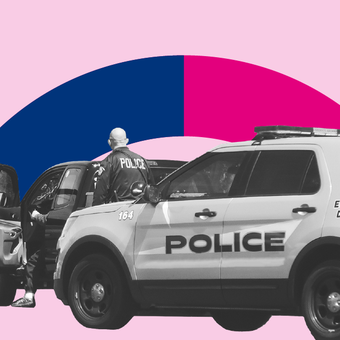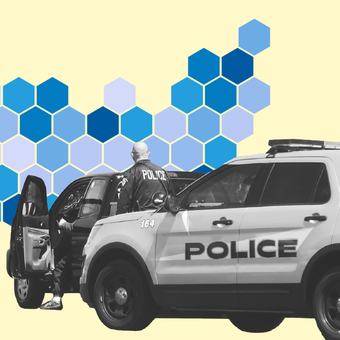The number of reported hate crimes — crimes motivated by bias against someone’s race, color, religion, national origin, sexual orientation, gender, or gender identity —rose by 7% between 2021 and 2022, according to updated 2022 hate crime data from the FBI.
Black and/or African American people were the most frequent targets overall. Among gender-motivated hate crimes, anti-transgender hate crimes increased 35% year over year. Religiously motivated hate crimes increased 27%, and specifically, antisemitic hate crimes increased by 36% from 2021 to 2022.
How many hate crimes are motivated by race?
Although crimes motivated by race, ethnicity, or ancestry decreased 1% between 2021 and 2022, they were the largest category of hate crimes, accounting for 56% of all reported hate crimes.
Of the 6,570 reported race-related crimes, 3,434 were anti-Black or African American. These crimes were higher than all other 2022 race/ethnicity/ancestry hate crimes combined.
Crimes targeting Black and African American people, which increased 4% from 2021 to 2022, differs from the overall decrease in racially motivated crimes.
Subscribe to get unbiased, data-driven insights sent to your inbox weekly.
Anti-transgender hate crimes
Anti-transgender crimes accounted for 338 of 469 reported gender identity hate crimes, and increased 35% year over year. Hate crimes targeting gender identity increased 33% from 2021 to 2022 and accounted for 4% of total hate crimes in 2022. The year-over-year increase in gender identity crimes was highest across all categories.
Religiously motivated hate crimes
Religion-based hate crimes had the second-highest number of incidents, increasing 27% from 2021 to 2022 and accounted for 18% of all reported hate crimes. This category represents the second largest year-over-year increase in crimes, after gender-identity crimes.
Out of 2,044 reported religion hate crimes, 1,124 were anti-Jewish — more than all other religiously motivated crimes combined. Anti-Jewish hate crimes increased 36% from 2021 to 2022.
What is the most common hate crime?
At 46.4%, intimidation was the most common crime targeting people in 2022, followed by simple assault (34.8%) and aggravated assault (17.6%). Murder, nonnegligent manslaughter, rape, and other offenses made up the remaining 1.2%.
Hate crimes are classified as one of three categories: crimes against persons, property, or society. In 2022, 66% of hate crimes were against a person, 32% were against property, and 2% were against society.
Where are hate crimes most likely to occur?
Homes were the most common location for hate crimes in 2022, with 3,215 incidents.
Of the hate crimes at a residence or home, 56% were motivated by race, ethnicity, or ancestry; 21% were motivated by sexual orientation; and 13% were motivated by religion. The remaining 10% were motivated by disability, gender, gender identity, or multiple biases.
The second-most common sites were highways, alleys, streets, or sidewalks. Hate crimes in these places were motivated by race, ethnicity, or ancestry 63% of the time. Crimes motivated by bias against sexual orientation represented 17%, and 11% were motivated by religion. Like hate crimes in a home, the remaining 9% were motivated by disability, gender, gender identity, or multiple biases.
Among all other locations, race, ethnicity, or ancestry was the majority motivation in seven of the 10 most common locations. But when it comes to crimes taking place at a church, synagogue, church, or mosque, 79% were motivated by religion, the strongest correlation of crime and location across all categories.
Who commits hate crimes?
White Americans were 51% of known hate crimes offenders in 2022 and make up 60.9% of the US population. Black or African American offenders were 21% of offenders and 12.2% of the population. The races of 17% of offenders, the third largest offender category, were unknown.
Where does the data come from?
Crime data for 2022 was collected by 15,726 of 18,888 participating law enforcement agencies through the Uniform Crime Reporting Program. Reporting is voluntary, and data reported to the program is available in the Crime Data Explorer tool.
Get an overview crime in the US or learn about hate crime data collection. Get USAFacts data in your inbox by subscribing to our weekly newsletter.
Recent crime articles
Read data analyses written by the USAFacts team.
Page sources and methodology
All of the data on the page was sourced directly from government agencies. The analysis and final review was performed by USAFacts.
Federal Bureau of Investigation
Hate Crime Statistics Annual Reports
Federal Bureau of Investigation
Crime Data Explorer



